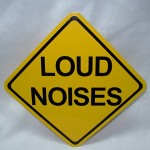Music Induced Hearing Loss (MIHL)
 From Eric Clapton to Pete Townsend, the music industry – especially rock music – has several notable musicians who suffer from Music Induced Hearing loss (MIHL).
From Eric Clapton to Pete Townsend, the music industry – especially rock music – has several notable musicians who suffer from Music Induced Hearing loss (MIHL).
The only thing worse than enjoying live music and then suddenly cringing in pain from feedback squeals is NOT hearing them. Sitting near a large stack of speakers can leave your ears dull for many hours after a show.
For anyone who has attended a music venue and left with ringing in their ears or muffled hearing afterward, it is no surprise that the noise level at concerts can cause damage. The average decibel (db) level at a rock concert is +110dbs, which is loud enough to cause permanent damage after just 15 minutes.
What Do Musicians Ear Plugs Do?
Unlike industrial noise exposure, there are many sources of hearing trauma in the musical venue. From the previously mentioned feedback and sound checks, to unexpected blasts from speakers, to limiters that are not set correctly, concerts are a veritable landmine of dangerous noise levels. If you work in the music industry, it should be obvious that you need to protect your hearing, but even music enthusiasts or musicians who simply enjoy regular concerts also should consider musicians earplugs as protection at every concert.
At Custom Protect Ear, we have a commitment to our customers to give them the highest quality ear protection available. Our dB Blocker™ hearing protectors are custom fit to each individual for the maximum comfort and the clarity to hear others without having to remove the earplug. This is particularly important for those in the music industry where one needs to protect the ears yet still hear and enjoy music.
dB Blocker™ Sweet Tones Musicians Earpieces
Our dB Blocker™ Sweet Tones Musicians earpieces are designed for musicians who want to hear sound without distortion but with less volume. If you are also concerned about hearing damage caused by regular use of earphones, we have your solution.
Love to Listen to Music with Ear Buds?
 Custom Protect Ear can also pair up your high quality earphones or cell phone headset with a dB Blocker™ earpiece for a comfortable, slip-free fit that protects your hearing and eliminates background noise. A perfect fit for your music enjoyment!
Custom Protect Ear can also pair up your high quality earphones or cell phone headset with a dB Blocker™ earpiece for a comfortable, slip-free fit that protects your hearing and eliminates background noise. A perfect fit for your music enjoyment!

